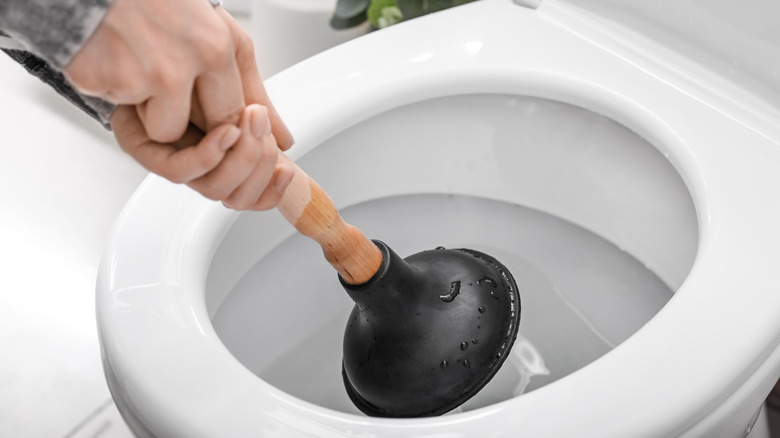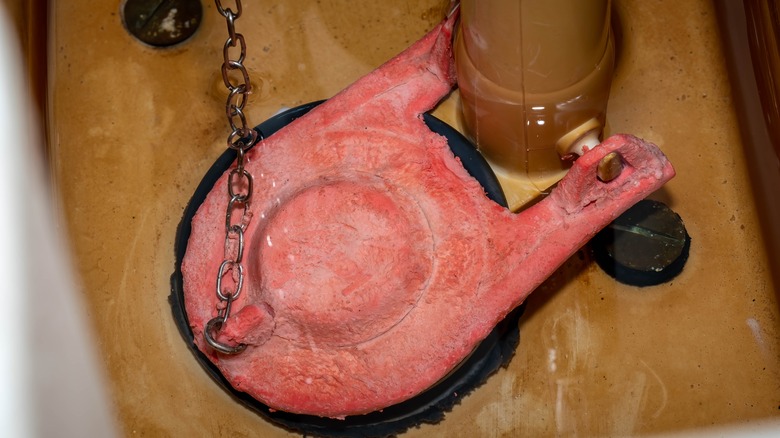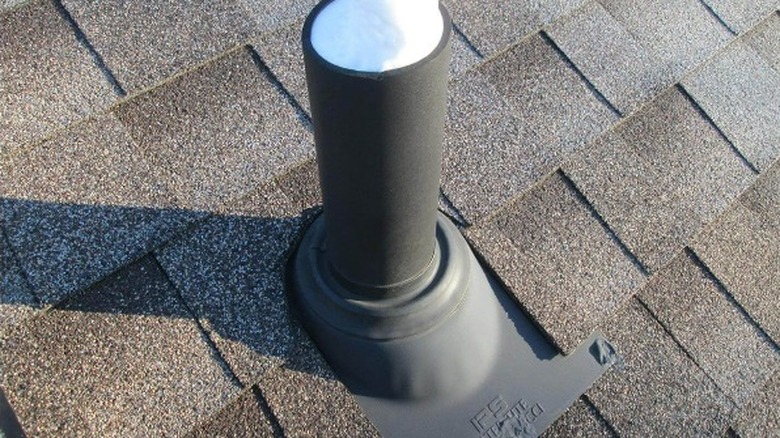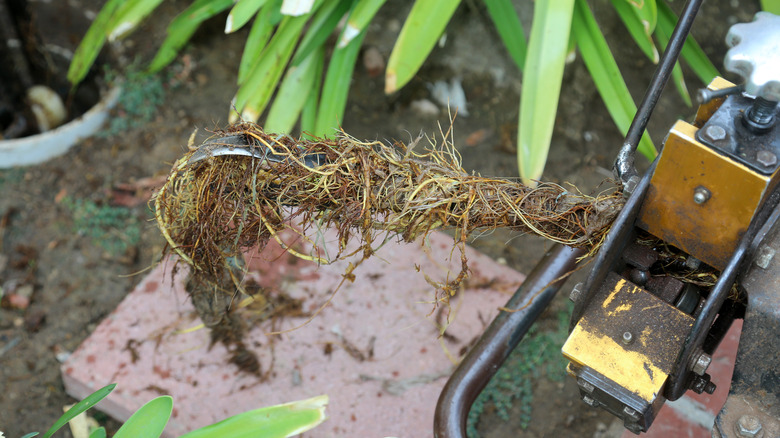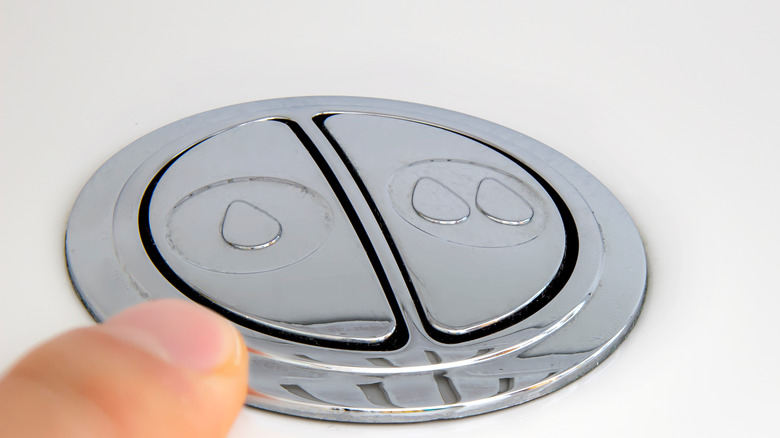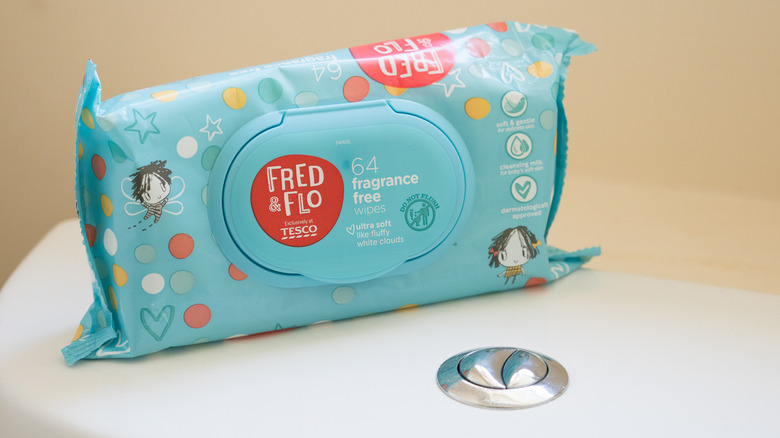Reasons Why Your Toilet May Keep Clogging
Toilet blockages can occur for many reasons, some more obvious than others. That being said, the most common causes of clogged toilets can be boiled down to one of five issues: mechanical malfunctions, like a faulty flapper; structural blockages with the trap or vent; external factors like sewer lines, age (older models have low-flow); or someone flushing things that aren't meant to be flushed, whether it be accidental or not.
Depending on the severity, you can clear out a select few of these root causes on your own — though it's never a bad idea to call for assistance, anyway. That said, most clogs must be dealt with by more impressive and professional means, like a seasoned plumber with a snake or a roto-rooter for those emergencies. Worst case scenario, if clogging seems to be a routine occurrence, and a plunger, liquid drain cleaner, or snake aren't effective, your plumber might need to do a more in-depth visual diagnosis by taking live video footage using a sewer line camera.
Mechanical malfunctions
If your toilet is clogged but seems to be running continuously, your problem might be as simple as a faulty or deteriorating flapper. Its function is to let water out when you flush and then stop water from draining. The chamber fills up, which means you can flush again. If the flapper is worn out, damaged, or not fitting correctly, this can affect the water flow when you flush. Not enough water means clogs are a more frequent occurrence.
The resolution is simple: get a new flapper valve and install it yourself. This just requires bringing the troublesome flapper to your local hardware store and looking for a replacement. Turn off the water to your toilet and then flush it until the tank is empty. It clips onto a chain attached to a big balloon-looking apparatus called the float. Once you've installed its replacement, turn the water back on and try a test flush. The chain is adjustable, so it won't work correctly if it's too loose or has too much tension.
Structural blockages
A plumbing vent has a very important job, but its location leaves it prime for becoming stopped up. That's because this piping goes directly up through the roof of your house, leaving it exposed to the elements, flying debris, and possible animal activity. If not properly covered, it's the perfect little spot to build a nest. The primary purpose of a plumbing vent is to prevent gasses and smells from entering your home. It also helps regulate air pressure in the piping, which allows your toilet to get a nice, full flush. If there happens to be a blockage at the top, then the toilet will have much weaker flushes because of improper air displacement. The fix is to have it cleaned by you or a professional.
Another common blockage concerns the toilet's anatomy and lack of water. The toilet trap is located between the bowl and the drainpipe, and its sole purpose is to prevent sewer smells from backing up from the toilet bowl. A lack of water and pressure stemming from mechanical or external forces can cause easily flushable items to become blocked in the toilet trap. This is easily remedied with a nice, good plunge to release the blockage. But if this doesn't work, you'd best call a professional.
External factors beyond your control
Sometimes clogs have absolutely nothing to do with your toilet and everything to do with sewer line issues. Your main sewer line — the network of piping that takes all of your waste water out of your home and to the municipal sewer line — can get stopped by any number of external factors. Bad plumbing connections, old or damaged piping, and especially tree roots are common causes of clogging because they impact your plumbing system's ability to properly remove waste from your home.
Luckily (or unluckily), it's relatively easy to figure out if your main sewer line is the culprit. If plunging your toilet (or sink) is becoming part of your everyday routine, everything smells and drains slowly, and most startlingly, your yard has become a stinky, boggy mess; you've got a sewer line clog. This needs to be dealt with right away because it involves shutting off all the water to your home, which puts it out of commission until the clog is resolved and the piping is replaced.
Early generation low-flow toilet
If your toilet is prone to clogging, and you have a first-generation eco-toilet, this could be the issue. Low-flow toilets were first brought on the market in the early 1990s when the United States passed a law mandating that toilets made after 1992 were prohibited from using more than 1.6 gallons per flush. It's been many decades since, and modern-day conservation toilets have more flushing power and use even less water.
If your aging low-flow loo tends to get overwhelmed, you might want to try swapping out the float for a different version or adjusting the setting so more water fills the tank. The float is located in the back chamber of the porcelain throne and attaches to the fill valve. Once you flush, the float begins to rise with the water level. If it's broken, obstructed, or set too low, you'll get a weaker flush.
Flushing damaging items
More often than not, a majority of clogs are caused by items that are not meant to be flushed. (Shocking, isn't it?) Unfortunately, people tend to treat toilets like trash cans, perhaps under the assumption that these magical chairs are practically indestructible. But if they were, then clogs wouldn't happen, would they? It's not just extra wads of toilet paper or Clorox Wipes that can cause severe plumbing blockages, either. Cell phones, jewelry, bacon drippings, and even contact lenses can all cause some serious damage.
If you're unsure of what's suitable and safe to send down the chute, it's best to err on the side of caution and follow the Rule of Ps, which says only to flush pee, poop, and toilet paper. To prevent these wipes from ending up where they shouldn't belong, states are adopting the "Do Not Flush" law, which requires any manufacturer of disinfecting and-or cleaning wipe products to label whether they are septic-safe and flushable.
